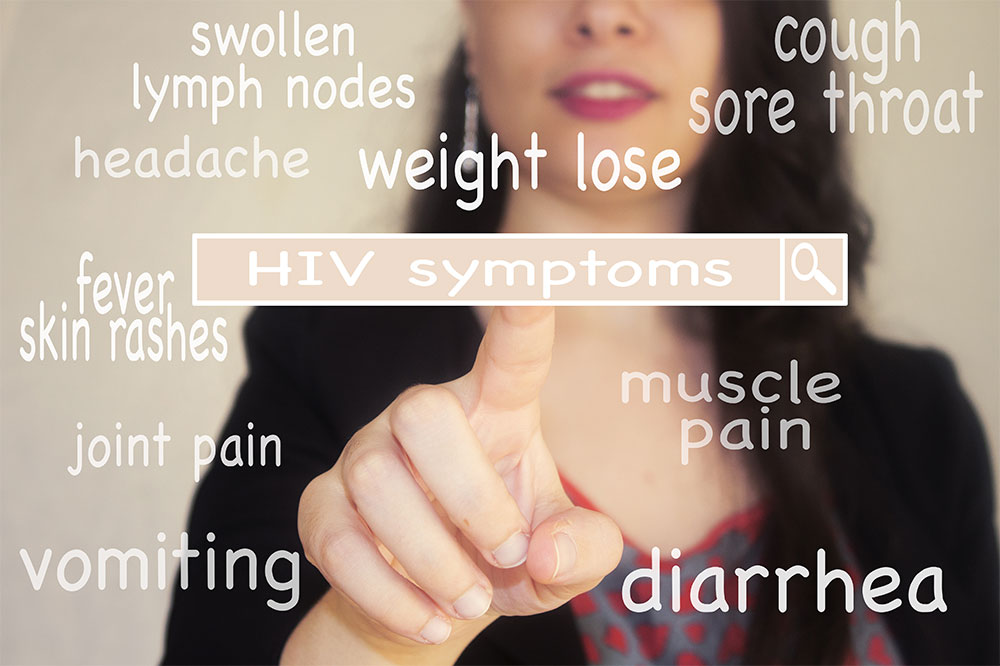
HIV infection – Early symptoms and foods to slow down the progression
The human immunodeficiency virus (HIV) affects more than 35,000 people in our country each year. It usually spreads through bodily fluids like genital secretions and blood. The virus attacks and impairs the body’s immune cells, weakening the immune system. If untreated, HIV can progress to a life-threatening condition called acquired immunodeficiency syndrome (AIDS). Here are the common and uncommon signs of early HIV infection and the foods that help slow down its progression.
Signs and symptoms of early HIV infection
It usually takes two to four weeks for the early HIV symptoms to develop. These symptoms are typically flu-like and may last for a few days to a few weeks. Stage one of the disease is referred to as acute HIV infection. Some common signs during this stage include fever, fatigue, muscle and joint pain, headache, loss of appetite, and swollen lymph nodes. Individuals may also experience a sore throat, skin rash, ulcers in the mouth and genitals, night sweats, and diarrhea.
While these are the most common signs and symptoms in the early stage of an HIV infection, some people experience atypical symptoms and even non-HIV-related illnesses. Further, some people experience diseases typically seen in the later stages, such as esophageal candida and shingles.
Non-HIV-related symptoms are often observed in the gastrointestinal system in the form of tonsillitis, gastric bleeding, gallbladder inflammation, and kidney failure. In some cases, the viral infection attacks the central nervous system, causing transient facial paralysis, acute psychiatric episodes, severe brain inflammation (encephalitis), and inflammation of the thin tissue surrounding the brain and spinal cord (meningitis).
It is worth pointing out that some people in the early HIV infection stage show no symptoms. Besides, one must not assume that they have HIV just because they exhibit one or more of these signs. The best way to confirm is to visit a doctor and get tested for the disease. Healthcare professionals mainly use blood tests to diagnose HIV. They look for antibodies in the blood that the body produces in response to the virus.
Foods that help fight HIV
No nutrition plan can cure HIV, but certain foods have nutrients that can help fight off the viral infection and boost the immune system. They may also slow down the disease’s progression and reduce the risk of complications. The foods to eat include:
Spinach
This leafy green has many beneficial nutrients, such as vitamin A, C, K1, folate, iron, and calcium. It also contains many antioxidants that can help ward off infection and reduce inflammatory markers associated with HIV. Since people with HIV are often deficient in many essential nutrients, spinach is one of the best options. Other nutrient-rich leafy greens to consider are broccoli and kale.
Lean beef
Beef is one of the best sources of high-quality protein. People with HIV need protein to build muscle, maintain muscle mass, and bolster the immune system. Since the infection can also cause inflammation of the muscle tissue, it is crucial to increase the consumption of beef and other protein-packed foods, such as chicken, turkey, fish, and eggs. Those underweight or in the later stages of HIV may need more protein.
Salmon
Salmon is a fatty fish and one of the richest sources of omega-3 fatty acids. Omega-3s are good fats that provide energy, maintain healthy cholesterol levels, and decrease inflammation. Another great thing about salmon is its high levels of vitamin D, a nutrient that supports strong bones. One should aim to eat two portions of salmon per week.
Brown rice
Brown rice is a whole grain, meaning it has all the three parts of the grain—the brain, the germ, and the endosperm—intact. This makes it high in fiber and many other nutrients. Fiber aids in digestion and may lower the risk of HIV complications like heart disease and type 2 diabetes. Fiber also helps the body absorb nutrients better, making brown rice a healthy food for patients diagnosed with an early HIV infection.
Milk
Milk is a good protein alternative for those who do not eat beef. It contains abundant vitamin D and calcium, both necessary for overall bone health. However, full-fat milk is high in saturated fats, so patients should have small quantities. Or, one can opt for low-fat milk or low-fat varieties of other dairy products like cheese and yogurt.
Nutrition is vital, but it may not be enough to manage a complex health condition like HIV. Doctors strongly recommend undergoing proper treatment for those diagnosed with the infection. This often includes using the following:
PIFELTRO™ (doravirine)
The FDA has approved PIFELTRO™ for treating HIV-1, the most common type of HIV. It is often used in combination with other treatments and is prescribed to patients who have not received HIV-1 treatments in the past or when other treatments are ineffective. PIFELTRO™ works by decreasing the amount of HIV in the body, preventing complications. It can be used once a day with or without food after consulting with a doctor.
Zidovudine
Like doravirine, zidovudine is prescribed in combination with other treatments. It curbs the infection by helping reduce the amount of virus in the body. Zidovudine can help slow down disease progression in patients with advanced symptoms, early HIV infection symptoms, or no symptoms. It is also commonly prescribed to pregnant women infected with HIV to prevent the virus from passing to the unborn baby. Zidovudine is popularly sold under the brand name Retrovir and can be used two to three times a day as advised by the doctor.